
World
16:40, 23-Jul-2018
BRICS 2018: Latin America paramount to South-South cooperation
Updated
15:55, 26-Jul-2018
By Abhishek G Bhaya
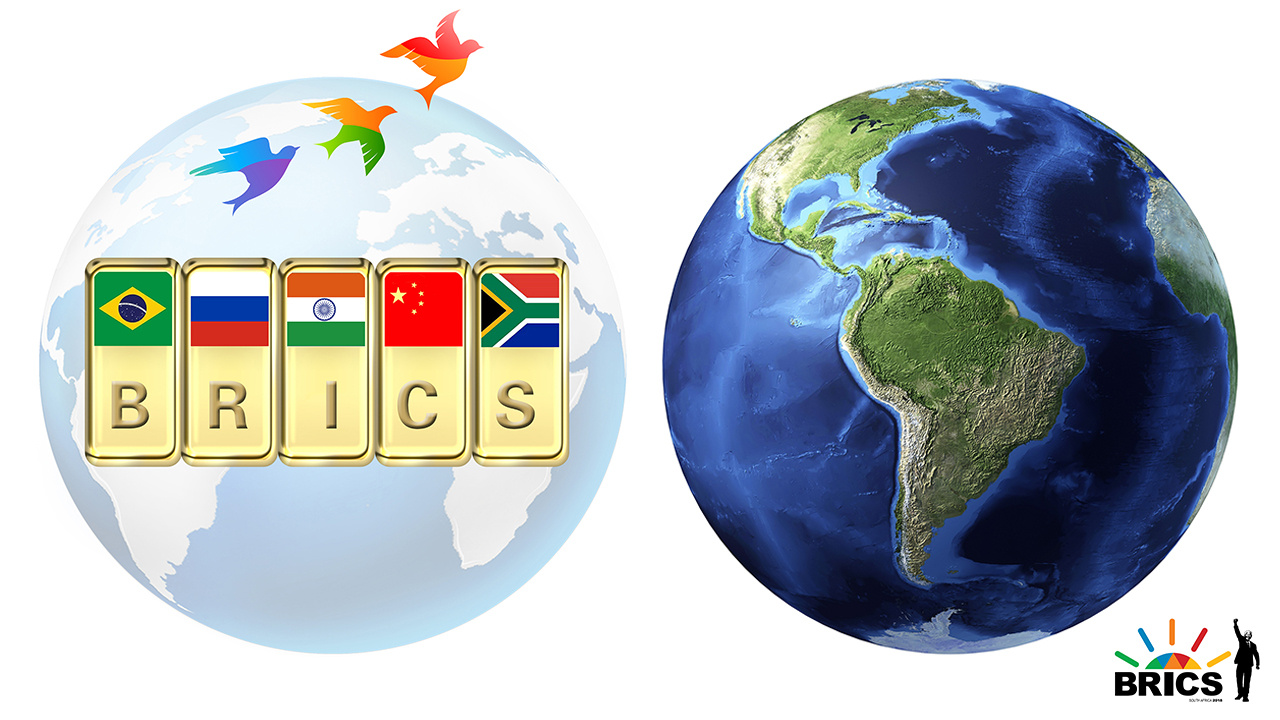
While the focus of this week’s 10th BRICS Summit in South Africa’s Johannesburg is expected to be on Africa, there’s another region that remains paramount to realizing the BRICS vision of South-South cooperation – Latin America and the Caribbean.
With a combined population of nearly 650 million from 33 countries in its fold, Latin America is seen by analysts with having immense potential for economic growth in the coming decades driven by its huge natural resources.
Also, with Brazil representing the interest of the region within BRICS, Latin America in recent times has seen a phenomenal increase in its engagement with the other members of the bloc that brings together the world’s top emerging economies including Russia, India, China and South Africa.
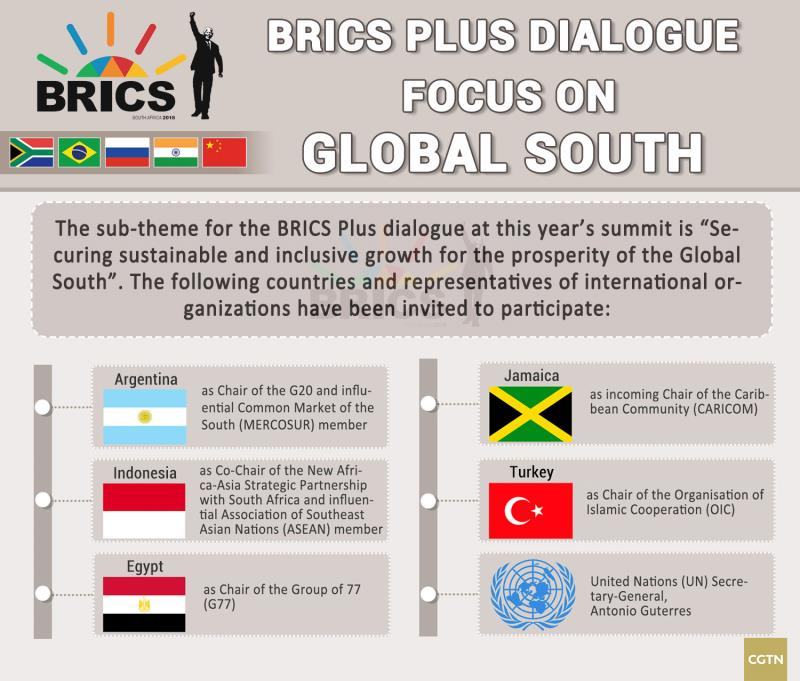
Related story: South Africa offers a continental reach for BRICS
Four years ago at the bloc’s sixth summit in Fortazela, Brazil invited the leaders of Latin American countries including representatives from the Community of Latin American and Caribbean States (CELAC) and the Union of South American Nations (UNASUR) to interact with the BRICS leadership, setting the foundation for the bloc’s outreach dialogue with other developing nations.
At this year’s BRICS Plus dialogue in South Africa, Jamaica has been invited to represent the Caribbean Community (CARICOM), a grouping of 15 Caribbean nations; while Argentina will attend the event as the Chair of the G20 and a member of the influential Common Market of the South (MERCOSUR).
Brazil is also scheduled to host the 11th BRICS Summit next year, which will make it the first country to host the summit for the third time.
Forging strategic alliances

“BRICS has placed a high premium in developing a close relationship with many Latin American states,” Diego Salama, a Bolivian expert on Latin American politics and foreign policy, told CGTN Digital.
“According to numbers from the United Nations Economic Commission for Latin America and the Caribbean (ECLAC), Latin American exports directed towards the BRICS have more than doubled since 2001 and every member of the BRICS has made a point in increasing their economic presence in multiple countries of the region,” said Salama, a communications officer at the United Nations University’s Maastricht Economic and Social Research Institute on Innovation and Technology (UNU-MERIT), the Netherlands.
Following decades of engagement, China is now the region’s top trade partner. In 2017, the total trade volume between China and Latin American countries rose 18.8 percent to nearly 260 billion US dollars, China’s Xinhua news agency reported.
Chinese President Xi Jinping in 2015 pledged to pump in 250 billion US dollars in direct investment to the region by 2019. By the end of 2017, China's direct investment stood at around 225 billion dollars, on track to meet Xi’s target.
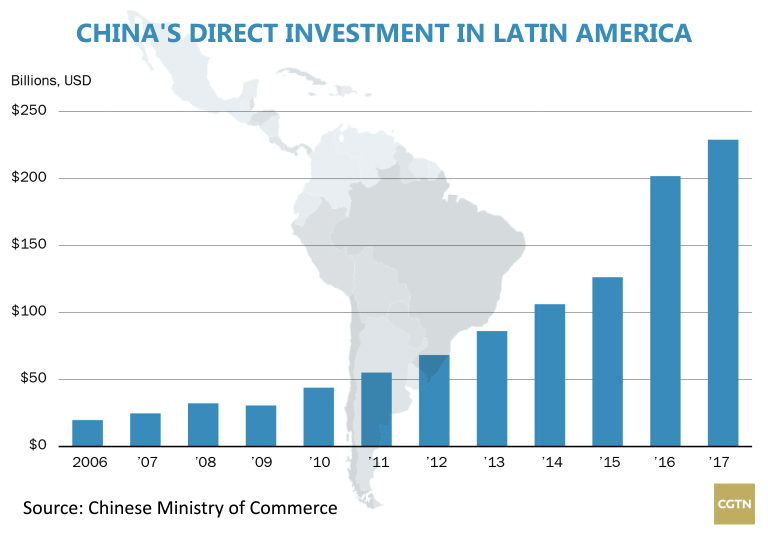
“India, Russia and South Africa are not far behind China when it comes to Latin America. The three have been aggressively signing commercial agreements and strategic alliances in order to secure a long-term presence in the region,” Salama remarked.
Trade between Latin America and India reached 30 billion US dollars in 2016, suggesting that there is great potential for economic ties to diversify and continue to grow in the medium term, according to a report by the Inter-American Development Bank (IDB), the largest source of development financing in the region.
India was ranked as Latin America’s seventh largest trade partner in 2015, advancing one place from its level in 2013. The IDB report also estimated that 50,000 local workers are employed by the approximately 200 Indian companies that operate in the region.
“While it’s abundantly clear that the BRICS have a strong presence in the region, it is also important to highlight that most of the agreement, loans and partnership between the BRICS and Latin America were developed on a bilateral basis and that isn’t going to change anytime soon,” Salama said.
Formal dialogue mechanism
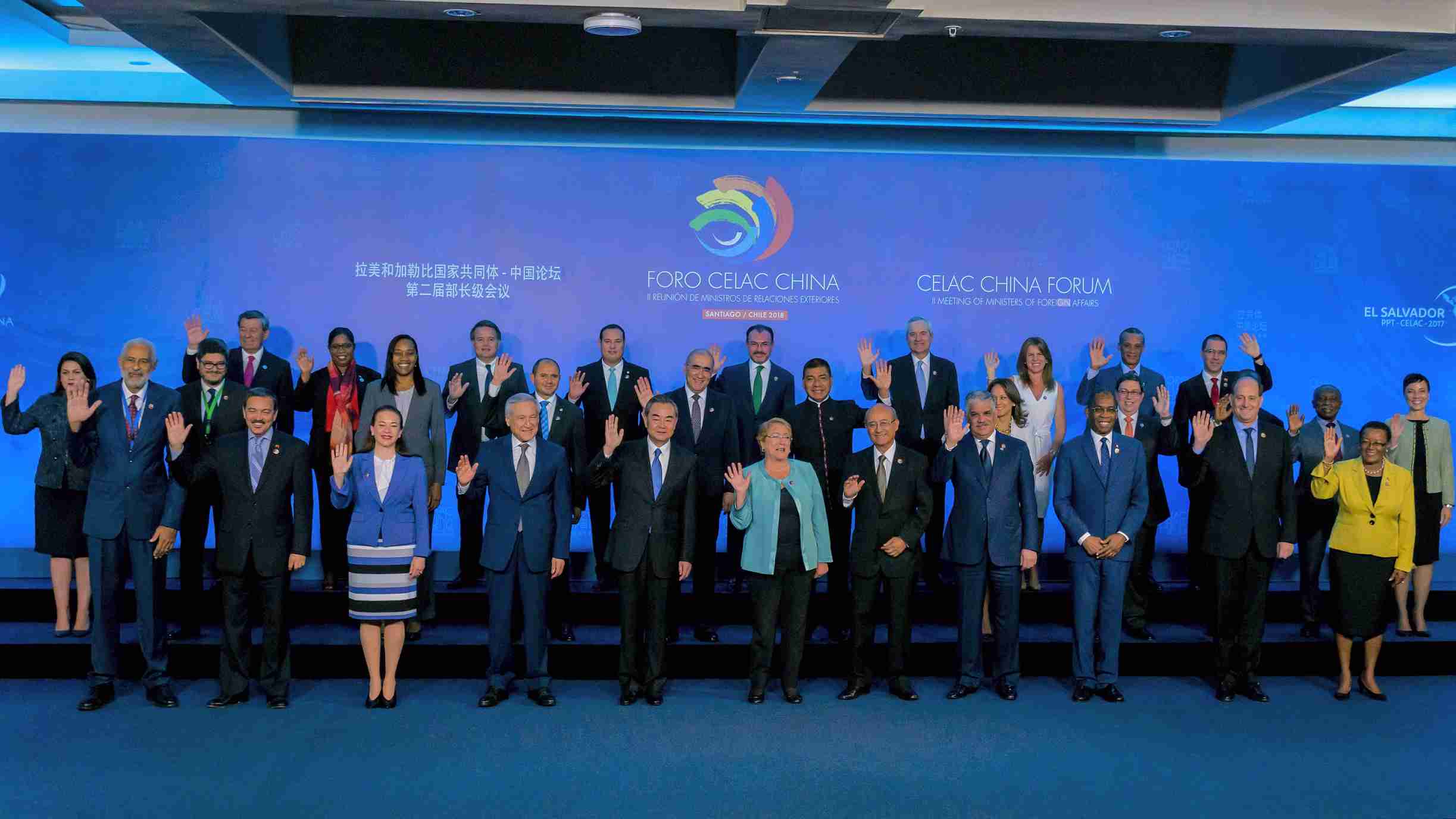
President of Chile Michelle Bachelet (center) and China's Foreign Minister Wang Yi with other representatives of the Community of Latin American and Caribbean States (CELAC) during the official photo of the second meeting of foreign ministers of the CELAC-China Forum, on January 22, 2018 in Santiago, Chile. /VCG Photo
President of Chile Michelle Bachelet (center) and China's Foreign Minister Wang Yi with other representatives of the Community of Latin American and Caribbean States (CELAC) during the official photo of the second meeting of foreign ministers of the CELAC-China Forum, on January 22, 2018 in Santiago, Chile. /VCG Photo
However, other analysts felt that the establishment of CELAC in 2011 has provided the region a unified and a more structured voice.
“With Brazil being a member of BRICS as well as CELAC, the BRICS’ engagement in the region will be mutually beneficial with larger implications for the globe,” geopolitical analyst Debidatta Aurobinda Mahapatra wrote in a commentary for Russia Beyond, a publication of Russia’s state-owned TV-Novosti.
CELAC also initiated formal dialogue mechanism with three major BRICS nations – China, India and Russia – in a clear sign of its political and economic priorities. India became CELAC’s first dialogue partner in 2012; the China-CELAC forum was established in 2014; and the regional group also signed a deal with Russia in 2015 to boost political dialogue and cooperation.

“The BRICS’ engagement with CELAC is not only a factor in promoting multilateralism and fostering a multi-polar world structure, but it also accrues economic advantages to both groupings. While the BRICS members are fast-rising economies with huge financial resources, the CELAC countries have also registered growth despite global economic slowdown,” Mahapatra said in his commentary.
Salama pointed out that “based on the animosity that much of the region has with the EU and the US, it has been quite easy for the BRICS countries to capitalize on the anti-Western sentiment which is present in many governments across the region.”
Multilateralism at the core
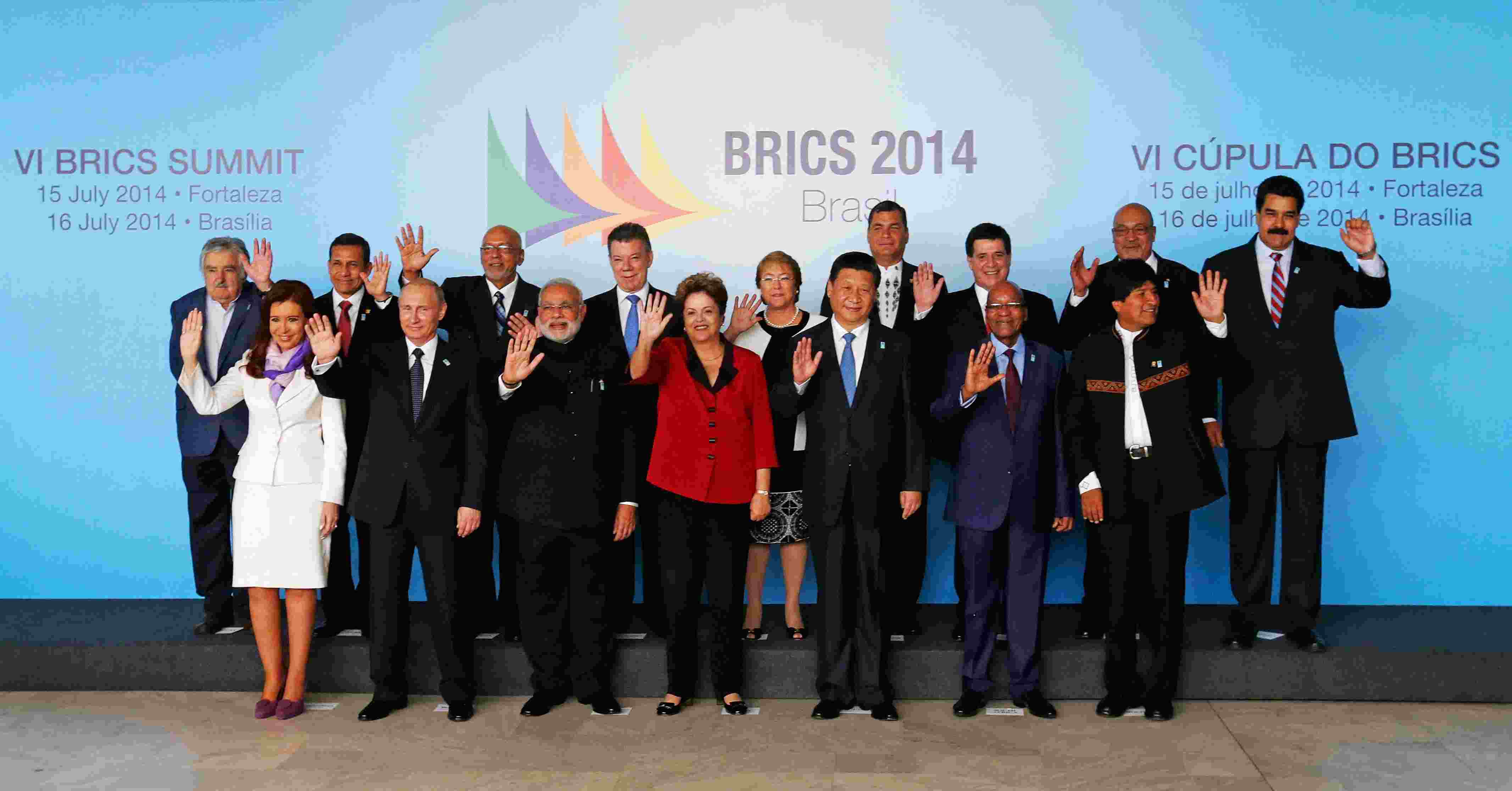
Leaders of the BRICS and South American nations pose for a group photo at the BRICS Summit at Itamaraty palace in Brasilia, Brazil, on July 16, 2014. /AP Photo
Leaders of the BRICS and South American nations pose for a group photo at the BRICS Summit at Itamaraty palace in Brasilia, Brazil, on July 16, 2014. /AP Photo
The BRICS declaration at the 2013 Fortaleza summit asserted the bloc’s support for “the South American integration processes” and came amid huge protests against charges of US spying in Latina American countries following leaked information by whistleblower and former National Security Agency (NSA) contractor Edward Snowden.
“We believe that strengthened dialogue among BRICS and South American countries can play an active role in enhancing multilateralism and international cooperation, for the promotion of peace, security, economic and social progress and sustainable development in an interdependent and increasingly complex, globalizing world,” said the Fortaleza declaration.
This week’s 10th annual BRICS Summit in Johannesburg will be held amid the West’s diminishing ability of setting the international agenda in a constantly changing global economic order. Some analysts see this as an opportunity for the BRICS to assume a more assertive role in world affairs.
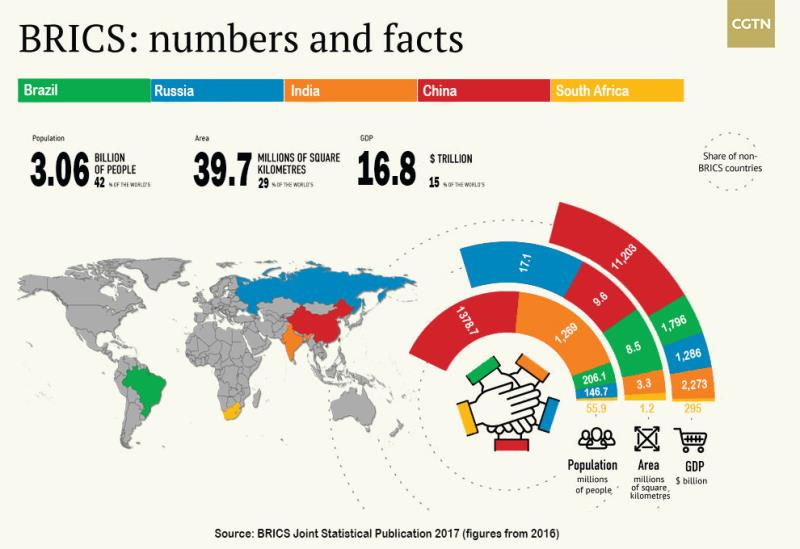
“The current state of the G7, a grouping of the world’s largest developed economies, is a case in point. At the group’s most recent meeting in Canada, President Donald Trump insisted on removing the term ‘rules-based international order’ from the meeting’s communiqué, then withdrew the US’ signature altogether,” Oliver Stuenkel, an international relations professor at Sao Paulo-based Getulio Vargas Foundation, observed in an article he wrote for Americas Quarterly.
“It is increasingly evident that [US President Donald] Trump is seeking to undermine the European Union, too, by providing active support for Euroskeptic forces across the continent. In light of such monumental global changes and a vacuum of power not seen since the end of the Cold War, the BRICS countries may currently agree with each other on more than do the world’s most advanced economies,” he wrote.
Both the upcoming summit in South Africa and Brazil’s BRICS presidency in 2019 are unique opportunities to help revitalize a grouping that, intentionally or not, is bound to play a key role in global affairs, Stuenkel added.
Latin America, like most of the world, will keep a close watch on the deliberations at the Johannesburg summit and the subsequent joint declaration that may likely have far-reaching consequences for the global order.
11719km

SITEMAP
Copyright © 2018 CGTN. Beijing ICP prepared NO.16065310-3
Copyright © 2018 CGTN. Beijing ICP prepared NO.16065310-3